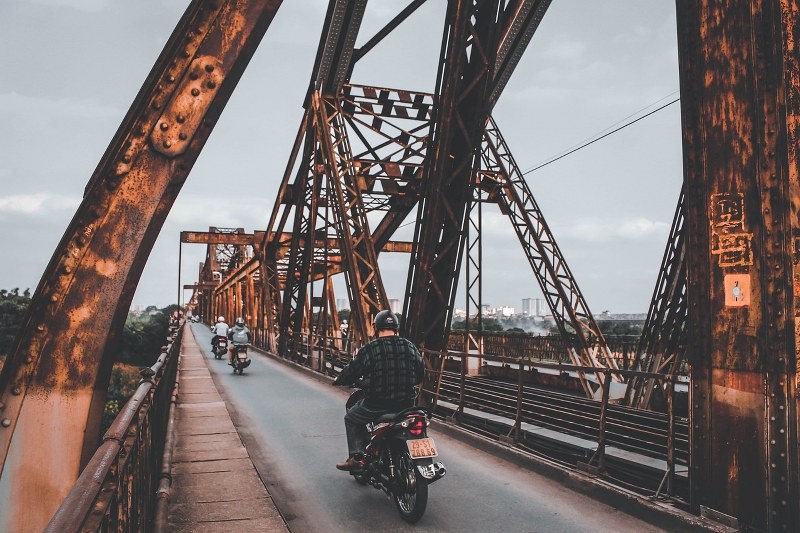
IIT Mandi researchers devise cost-effective method to monitor bridge health using traffic data
Mandi (Himachal Pradesh): A team of engineers at IIT Mandi has developed an innovative method to determine the extent of wear and tear on bridges with the help of traffic data, media reports said.
Dr Subhamoy Sen, Associate Professor at IIT Mandi’s School of Civil and Environmental Engineering, along with his research scholar Eshwar Kuncham, has developed a method that allows monitoring the health of the aging bridges in an efficient manner by focusing on their most vulnerable parts rather than monitoring the entire structure, reported India Today.
This approach addresses the challenges posed by fatigue-induced damage and gradual deterioration of bridges by predicting the impact of different traffic patterns on various parts of the bridge over time.
The method helps experts detect the areas most vulnerable to damage.
Their research has been published in the prestigious journal, Structural Health Monitoring.
After identifying these critical areas, fatigue-sensitive sensors are placed at strategic points to monitor stress and vibrations.
This real-time data, integrated with traffic patterns from the digital model, enables experts to assess the impact of traffic on the bridge over time.
Adjustments to traffic flow and speed can be implemented, if needed, to maintain the bridge's safety and prevent damage.
Bridges face a range of cyclic loads during their lifespans, such as traffic, wind, and environmental forces.
Over time, these repetitive stresses can compromise the structural integrity, potentially resulting in catastrophic failures.
As a result, addressing bridge fatigue has become crucial, driving substantial progress in engineering research aimed at predicting and preventing such outcomes.
Historically, determining a bridge's Remaining Useful Life (RUL) relied on simplistic methods with wide safety margins, often leading to imprecise assessments.
Subsequent innovations, including rain flow counting and finite element analysis (FEA), offered deeper insights into stress and fatigue patterns.
More recently, statistical models and machine learning have further enhanced predictive accuracy.
However, these advanced techniques can be expensive, demand extensive equipment, and may still miss concealed issues, especially in aging bridges with uncertain material properties.
Dr Subhamoy Sen highlighted the practical benefits of his research, such as reducing costs and the need for extensive equipment.
"Our approach focusses on monitoring only the critical zones of a bridge, significantly reducing costs and the need for extensive equipment. By leveraging traffic data, we provide real-time assessments and make timely interventions, ensuring bridge safety and longevity without major traffic disruptions," he was quoted as saying by India Today.
This approach enables quick evaluations after events such as earthquakes or floods, helping officials make faster safety decisions.
Once installed, the system allows routine monitoring to be managed by less specialised personnel, lowering costs and simplifying implementation across multiple bridges.
For government agencies and transportation departments, this method provides a practical, cost-effective strategy for managing aging infrastructure.
It prioritises high-risk areas over entire structures, optimising the budget allocation and enabling quicker decision-making during emergencies to enhance public safety.
Moreover, it reduces the need for extensive, disruptive traffic management during inspections, minimising inconvenience for commuters.
Support Our Journalism
We cannot do without you.. your contribution supports unbiased journalism
IBNS is not driven by any ism- not wokeism, not racism, not skewed secularism, not hyper right-wing or left liberal ideals, nor by any hardline religious beliefs or hyper nationalism. We want to serve you good old objective news, as they are. We do not judge or preach. We let people decide for themselves. We only try to present factual and well-sourced news.







